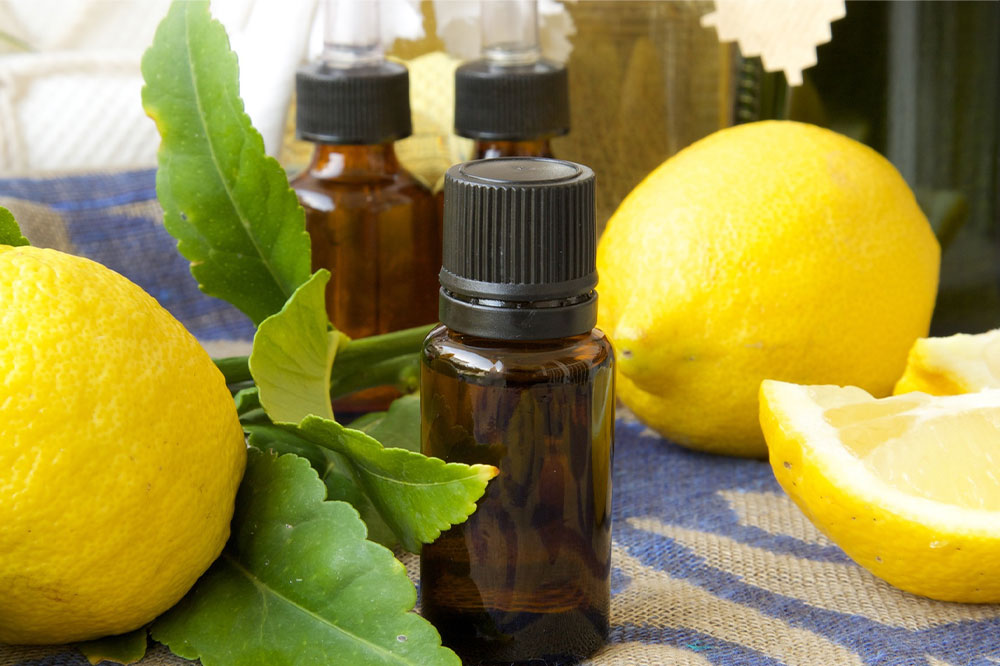8 natural scents that repel mosquitos

Mosquitos can be pretty annoying, but more than that, they can also be harmful as they are the carriers of disease-causing germs. The insect is attracted to various scents like skin odor, scented soaps, and more. Carbon dioxide emitted by human beings, along with other typical body fragrances, can be a great pull for mosquitos. So, which are the scents that repel them? Here are eight of them that can keep mosquitos at bay:
8 natural mosquito repellents
Lemon eucalyptus oil or OLE
A study conducted in 2014 proved that 32% of OLE can provide effective protection (up to 95%) from mosquitos for up to three hours. The plant-based natural oil has been in use ever since the 1940s as a mosquito repellent. This natural oil is approved by the Centers for Disease Control (CDC) too. It is possible to make this repellent at home. All you need is a mixture in the ratio of 1:10 of lemon eucalyptus oil to sunflower oil.
Precaution: Take care not to use the pure version or OLE essential oils. Also, it is better not to use the concoction on a three-year-old or kids aged less than this.
Citronella
Citronella is probably one of the most effective natural oils to keep mosquitos at bay. The oil has a citrusy smell and is made from lemongrass plants. Most commercial-level mosquito repellents and sprays usually contain citronella as one of the ingredients. The best to apply this option is to make a mixture and not use the essential oil directly on the skin. If you do not have access to a lemongrass plant, you can use the citronella geranium, a geranium variety of flowering plants that has a similar scent to citronella oil.
Garlic
This is another scent that can irritate mosquitos. There are two ways to use garlic as a mosquito repellent. One of the ways is to consume garlic orally, wherein allicin, its active ingredient, helps creates a protective layer against mosquitos around you. Allicin hinders the body’s natural scent and helps keep the pests away. The other way to use it is by cutting pieces of garlic cloves and dispersing them around your house, garden, etc. You can also mix the cut pieces with oils and prepare an effective mosquito repellent.
Lavender oil
If your garden is filled with purple lavender flowers, you can use the flowers to prepare a scent that repels mosquitos. A 2002 study concluded that lavender oil used on mice could effectively repel adult mosquitos. Besides, the oil, when applied to the skin, helps soothe it since it has analgesic and antiseptic properties. The ideal way to prepare this repellent is to crush lavender flowers. The oil extract is to be applied to the most vulnerable areas of the body like the arms, ankles, feet, etc. Note that it is imperative to mix essential oils with neutral carrier oils before applying them.
Neem oil
In 2015, a study was conducted to understand the effectiveness of neem oil as a mosquito repellent. The study was conducted in Ethiopia, and it was found that the oil was effective for around three hours on more than 70% of the population. Also, ensure to use the extra virgin neem oil extracted through cold-pressed methods. It can be prepared at home. Dilute the oil by mixing it with water or another skin-friendly oil.
Camphor
This is another strong scent that repels mosquitos. Camphor tablets are easily available over the shelf, and they are made using the Cinnamomum camphora tree. The best way to use the tablets is to immerse a tablet in a water bowl and let the fragrance spread. The other thing that you can do is burn camphor. Take care to close the doors and windows of the place so the scent does not dissipate. While it is one of the best alternatives to using commercial mosquito repellants, care needs to be taken while using it at home. Camphor is highly inflammable and toxic if consumed orally. Keep it away from kids and pets. Take care never to apply it directly on the skin as it can irritate wounds and cuts.
Apple cider vinegar
All kinds of vinegar, except white vinegar, repels mosquitos because of the strong dominating smell. Similarly, apple cider vinegar is also very effective in keeping mosquitos at bay. It is suggested that if consumed enough, the natural body odor changes enough to repel these insects. You can also use the spray to drive mosquitos away and kill the larvae. The good thing is that this vinegar type is easily available and quite simple to use. Vinegar sprays can be created easily at home. Simply pour the diluted vinegar into a spray bottle and spray it onto various surfaces.
Peppermint oil
Mosquitos dislike the smell of peppermint, and the Journal of Medical Entomology published research details regarding the same. A high concentration of peppermint oil can effectively keep away mosquitoes. It is ideal to use a diffuser to let the strong smell of the oil diffuse near you. It can be used outdoors too.
Conclusion
While there are multiple types of commercially-available mosquito repellants, these eight smells mentioned here are easily available and don’t have any side effects when used. These natural ways of keeping the insect at bay can be used even around children, pets, and the elderly, with some caution. Note that essential oils need to be mixed with carrier oils before application; they can harm the skin and lead to other health issues otherwise. Take care to follow the guidelines and instructions, especially if you are making the repellents at home.



